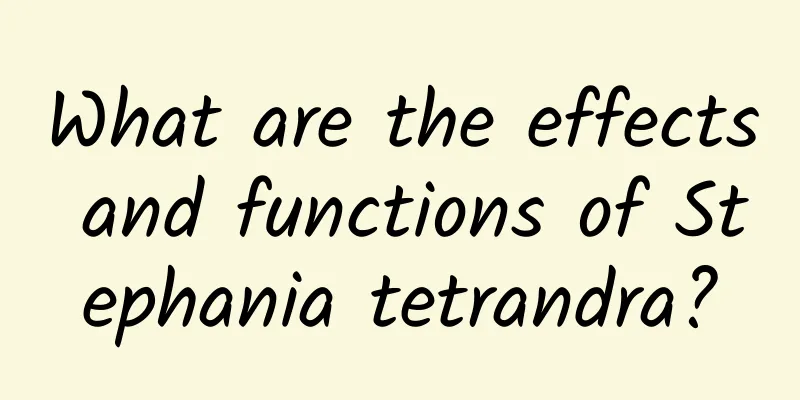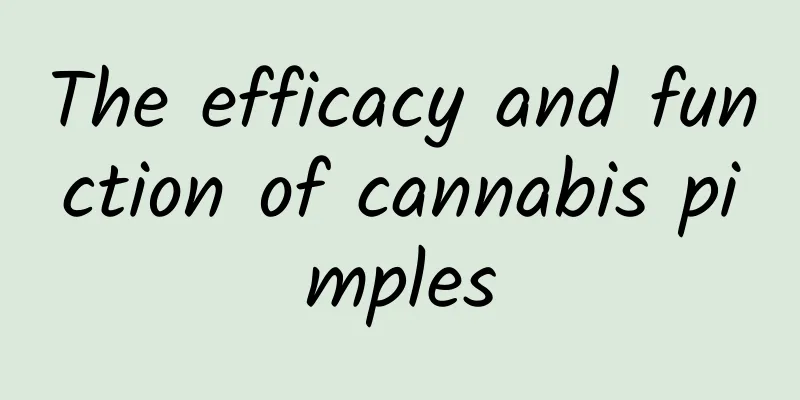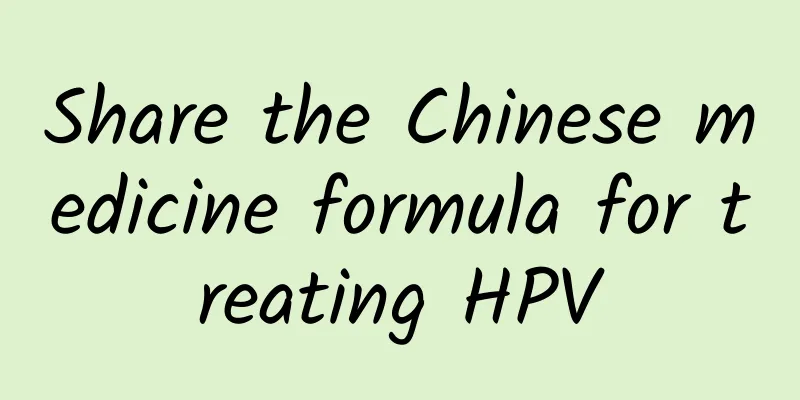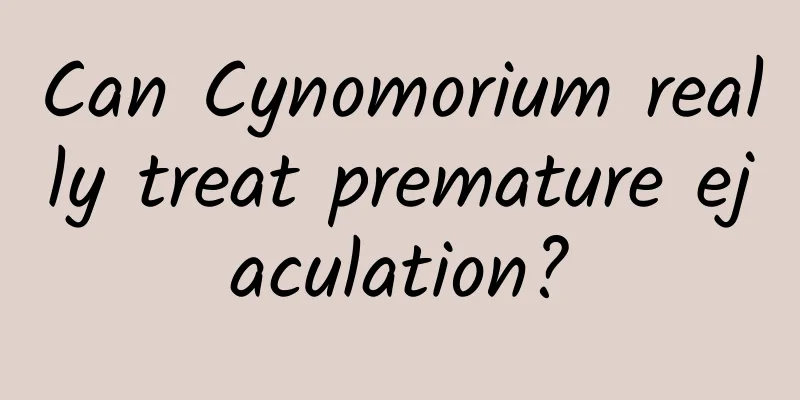What are the effects and functions of Stephania tetrandra?

|
my country's traditional Chinese medicine culture has a broad spirit, and many Chinese medicine classics have been passed down from ancient times to the present. Among them, there are many types of Chinese herbal medicine, including those we often hear about, such as ginseng, angelica, bupleurum, etc., and some that we are not so familiar with, such as Stephania tetrandra. The effects and functions of Stephania tetrandra are anti-inflammatory, detumescent, analgesic and antipyretic, with significant therapeutic effects. 1. The analgesic effect was tested by the mouse hot plate method, the writhing method and the rat photothermal tail flick method, all of which confirmed that tertium fangji alkaloids have analgesic effects. 5-40mg/kg intraperitoneal injection significantly prolonged the hot plate pain reaction time of mice 30 minutes later, and the effect increased with increasing doses. The effect lasted for more than 180 minutes, and the ED50 was 13mg/kg. Continuous use does not produce tolerance, and has no cancellation and substitution effect on the withdrawal symptoms of morphine-addicted animals after cessation of morphine. It is a non-narcotic analgesic. 2. Antipyretic effect: Intraperitoneal injection of 80 mg/kg and 100 mg/kg of tetrandrine had a significant antipyretic effect on yeast fever rats. 3. Anti-inflammatory effect: Tetrapanacine has a significant inhibitory effect on early exudative inflammation and late proliferative inflammation. Intraperitoneal or subcutaneous injection of 10-40 mg/kg has a significant inhibitory effect on egg white, formaldehyde and carrageenan-induced plantar swelling in rats, cotton ball granuloma proliferation, and increased permeability of abdominal capillaries and ear swelling in mice. The inhibitory effects of oral administration of 400 mg/kg and intraperitoneal injection of 10 mg/kg on egg white-induced paw swelling in rats were similar. Tetrapanax quinidine does not prolong the survival time of adrenalectomized young rats, indicating that it has no adrenocortical hormone-like effects. The effect still exists after bilateral adrenalectomy in rats. Tetrapanacine significantly reduced the release of prostaglandin E (PGE) from inflammatory tissues of rats, increased plasma cortisol concentration, thymus atrophy, and increased adrenal weight. The results showed that the anti-inflammatory mechanism of tetrandrine was related to the stimulation of the release of adrenocorticotropic hormone (ACTH) in the hypothalamus or pituitary and the inhibition of the synthesis and release of PGE. 4. Muscle relaxant effect: Dimethyltetridine iodide (DTI) has a significant muscle relaxant effect on rats, rabbits and cats. The dose of the rabbit head drop test was 0.16±0.03 mg/kg, which is smaller than the dose of tubocurarine. The two drugs had an additive effect when used together. Intravenous injection of DTI (0.55-4.0 mg/kg) in anesthetized rabbits, cats, and rats can completely block the maximum twitch of the anterior triceps muscle produced by indirect stimulation of the sciatic nerve. DTI has no direct effect on the muscle itself. Its site of action is at the postsynaptic membrane, where it competes with acetylcholine for N2 receptors. It is a non-depolarizing muscle relaxant. 5. Antihypertensive effect: Intravenous injection of 1.25-20 mg/kg of tetrandrine in cats has a antihypertensive effect in a dose-dependent manner; atropine, purchasinolol, hexamethonium bromide or vagus nerve severance cannot block its antihypertensive effect. Intravenous injection of DTI (0.00625-1.0 mg/kg) into anesthetized animals (cats, dogs, rabbits, rats) can cause a significant decrease in blood pressure, with a decrease rate of 24.3%-61.5%, and a dose-dependent relationship. There was no obvious rapid tolerance to the antihypertensive effect of DTI after intravenous injection at long intervals of 24 hours and continuous intravenous injection in rats. Oral administration of DTI at 3mg/kg and 10mg/kg significantly reduced the systolic blood pressure of rats and the mean blood pressure of anesthetized rats. Intravenous injection of 0.5mg/kg had a significant antihypertensive effect on rats with acute renal hypertension. The antihypertensive mechanism is mainly related to its blocking effect on ganglia, and may also be related to the inhibition of the renin-angiotensin system. After intravenous injection of DTI in anesthetized dogs, the heart rate slowed down, the blood pressure dropped rapidly, the left ventricular systolic peak pressure and the maximum rate of change of left ventricular pressure decreased significantly, but the cardiac output did not change significantly. The aortic strip experiment showed that alkaloids of phenantolamine (sulfate extracted from the rhizomes of Stephania tetrandra) have α-receptor blocking effects, but they are not exactly the same as phentolamine. Phentolamine may also affect potential-dependent calcium influx, while the former does not have this effect. |
<<: What are the effects and functions of Rehmannia glutinosa?
>>: Can I eat eggs while taking Chinese medicine when I am sick?
Recommend
Bring your own antidote and not be afraid of toxins: How did poison frogs and pufferfish become “poison masters”?
There are so many poisonous animals in nature. Ha...
How should wolfberry be consumed?
I believe that most people will not feel unfamili...
"Help me up!" New research: Even at 60, your brain is still alive
Written by: Hao Jing: Editor: Kou Jianchao Layout...
The efficacy and function of the dragon
In today's society, health preservation seems...
After reading this article, you can also pick up meteorites in the wild!
Although I have been doing meteorite research, Bu...
The efficacy and function of curtain vine
Modern medical research believes that curtain vin...
Today is the Autumnal Equinox丨Blue sky, yellow leaves, autumn colors
" Fen means equal. This is half of the ninet...
The role of Chinese medicinal licorice
When it comes to the traditional Chinese medicine...
Does motherwort cause uterine contraction?
As for motherwort, it is indeed the effect of ute...
The efficacy and function of fresh bamboo sap oral liquid
Fresh bamboo sap puree and oil are a common thera...
The efficacy and function of An (Che Lu) Zi
Many people are not very clear about An (艸闾) seed...
The efficacy and function of Aquilegia qinlingensis
Aquilegia qinlingensis is a medicinal herb that i...
The role and use of cat's eye grass
Chinese herbal medicine is a treasure of wisdom p...
The efficacy of Ligustrum lucidum
There are many kinds of medicines. When treating ...
Extra: The evolution of coins!
Scan the QR code to view more popular science com...









